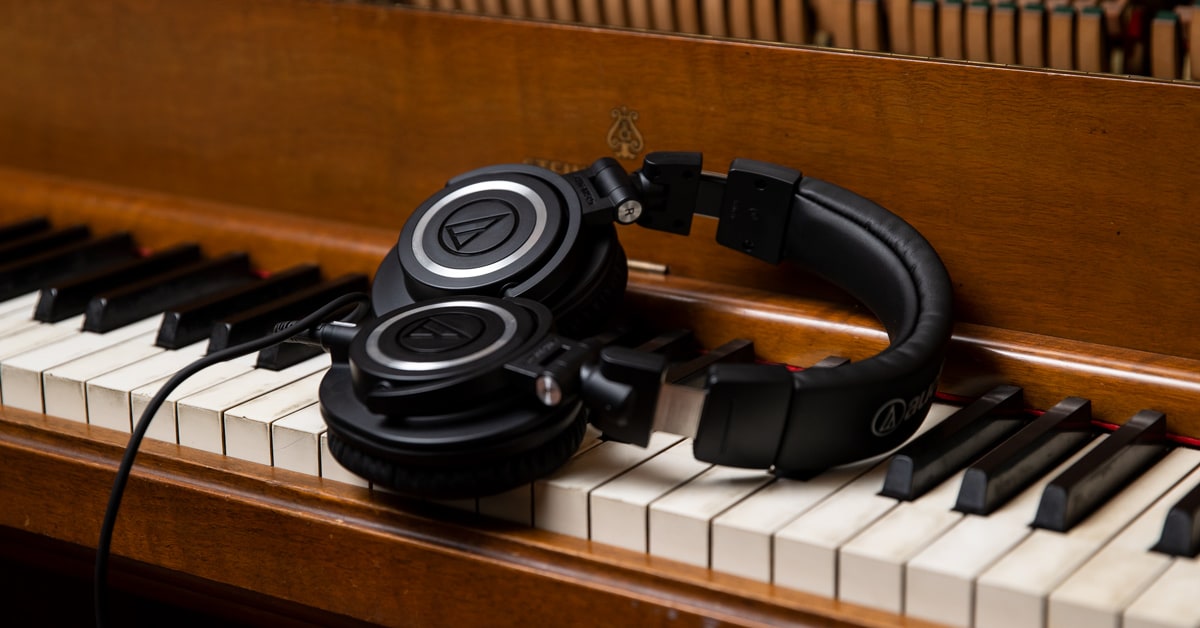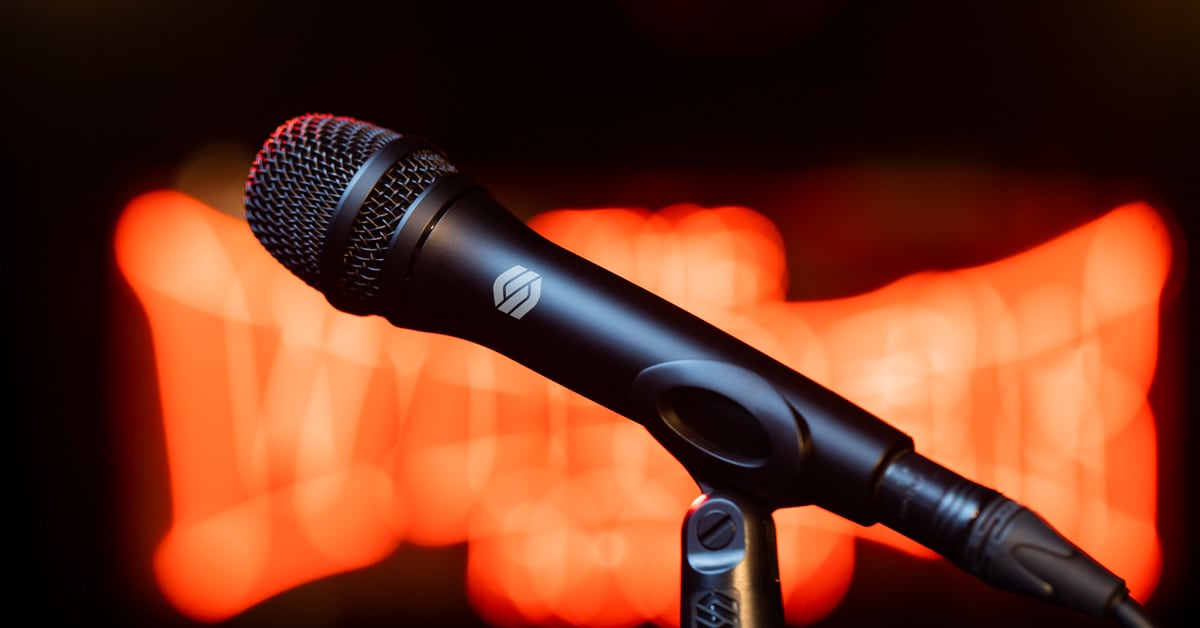All microphones fall into the category of “transducers,” which is to say, devices that convert one form of energy into another. In the case of mics, this means converting the mechanical energy of sound waves into electrical energy that can be amplified and/or recorded. Over the history of electric sound recording, several different design and construction types have been developed for this, and in this short article, we’re going to look at how one of those types—the dynamic microphone—works.
Dynamic mics fall into two basic categories—pressure and pressure gradient—but the basic operating principle is the same. These mics are moving-coil transducers, which means they follow the same design principle as a magnetic loudspeaker. This shouldn’t be surprising, as such speakers are just transducers that work in the other direction, changing electric energy into the mechanical energy that pushes out sound waves.
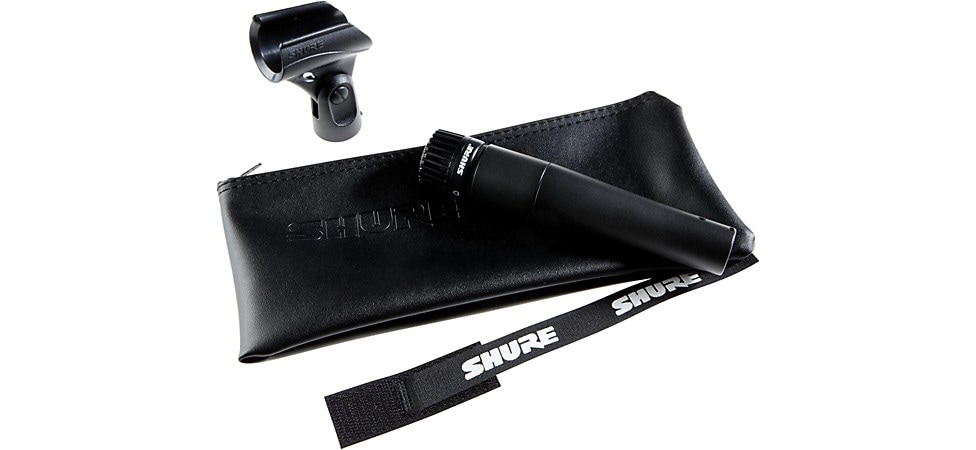
Pictured: Shure SM57 Dynamic Microphone
So, here’s how it works: A lightweight membrane, known as the diaphragm, is attached to a very lightweight coil of wire that’s wrapped around a form of some sort. This coil is placed inside a magnetic field. As you probably know, when you move a coil of wire inside a magnetic field (or when you move a magnetic field inside a coil of wire—it’s the movement that counts), it generates a small electrical current. When a sound wave of sufficient amplitude to move the diaphragm hits it (we did mention that these diaphragms are very lightweight, right? So, it doesn’t take a lot of energy to move them) it makes the coil move synchronously with the peaks and valleys of the sound wave, generating electrical currents. On their own, those currents aren’t very strong, so the microphone also contains a small transformer that increases those electrical signals to a high enough level to travel over the mic cable to the input channel on your mixer or audio interface.
So where does this “pressure” thing we mentioned above come into play? It seems there are two basic ways of setting up a moving coil—first, so only one side of the diaphragm is exposed to sound waves, and second, so that both sides of the diaphragm are exposed to sound waves. The first method uses a sealed chamber (well, mostly sealed, as you need one or more small ports so the chamber can adjust to changes in atmospheric pressure) behind the diaphragm so that any sound that hits the diaphragm, no matter what direction it comes from, will move the diaphragm and create a signal. This means that any mic that is purely a pressure microphone is, by definition, omnidirectional in nature. Popular omnidirectional dynamic mics include the Electro-Voice RE50 and the Shure VP64A, both of which are frequently used as handheld mics for interviews or other situations that need wide audio coverage.
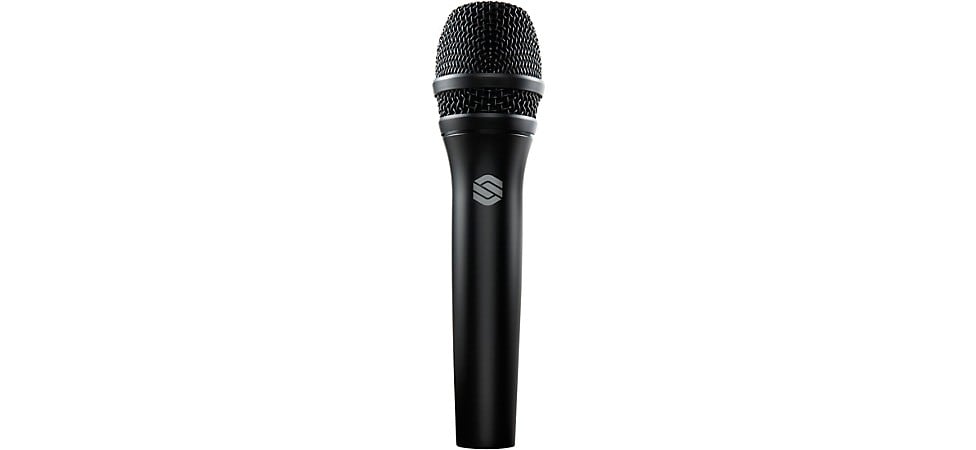
Pictured: Sterling Audio P20 Dynamic Vocal Microphone
The second method—called a pressure gradient transducer—exposes both the back and the front of the diaphragm to the sound, so that sound hitting it from both the front and the back will be picked up. This creates a bi-directional pickup pattern, often referred to as a figure-of-8 (frequently shortened to just “figure-8”) pattern. Because the nature of this pattern is that the two faces of the diaphragm—let’s call them “front” and “back”—move in such a way within the magnetic field that they are inherently 180° out of phase. It also means that a sound from 90° off-axis to the diaphragm applies equal pressure in both directions, not moving the diaphragm at all, offering an astonishing 90dB average reduction in sound level from off-axis sound sources.
These two polar patterns, omnidirectional and bidirectional, are the only naturally occurring polar patterns. Every other polar pattern—cardioid, super-cardioid, hyper-cardioid, etc.—is created by combining the natural polar patterns in various ways. Getting into that would involve math, which we’re not going to burden you with in this article, but if you want to dig deep, this can be an interesting rabbit hole to scurry down. Interestingly, one of the most widely used cardioid mic capsules—one shared by the Shure SM57 and SM58—is based on Shure’s Unidyne capsule, which was as a pressure gradient mic engineered for a cardioid polar pattern. Other popular dynamic mics include the Sennheiser MD421 and MD441.
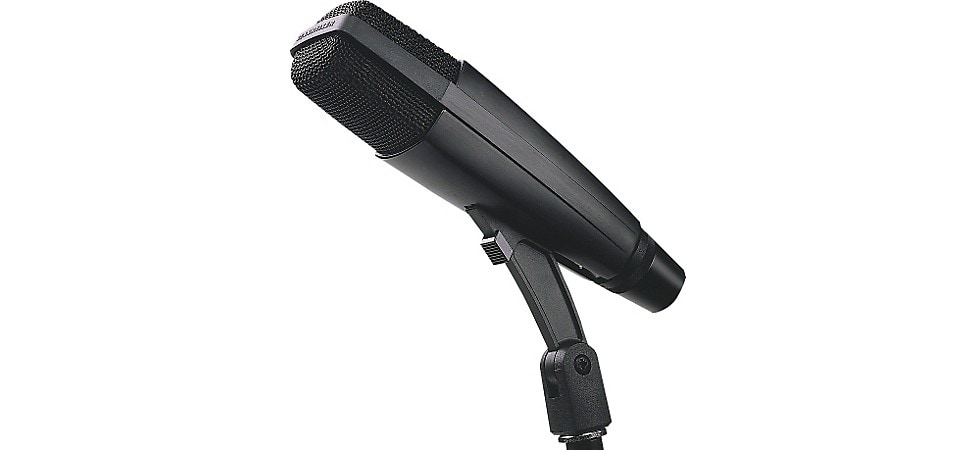
Pictured: Sennheiser MD 421-II Dynamic Microphone
So, now that you know how a dynamic mic works, how do you put that knowledge to use? Dynamic mics are inherently sturdy and handle high-SPL (Sound Pressure Level) sources like guitar amps, kick drums and other drums miked directly without undue distortion. Since, aside from a small group of active dynamic mics that contain built-in preamps, they don’t require power, they’re easier to use. They also tend to sound “warmer” than other mic types, which, combined with their inherent sturdiness, has made handheld dynamic microphones the overwhelming choice for live vocals, as well as a very popular choice for voice acting, radio broadcast and podcasting.
The one drawback to dynamic mics is that they are not as sensitive at greater distances, so do less well in situations where the mic cannot be placed as close to the sound source. Another consideration is that dynamic mics tend to have less presence in the higher frequencies. This last is not bad when you have a source that has harshness in the upper frequency range, but needs to be considered when you want some extra “air” in your recording.








